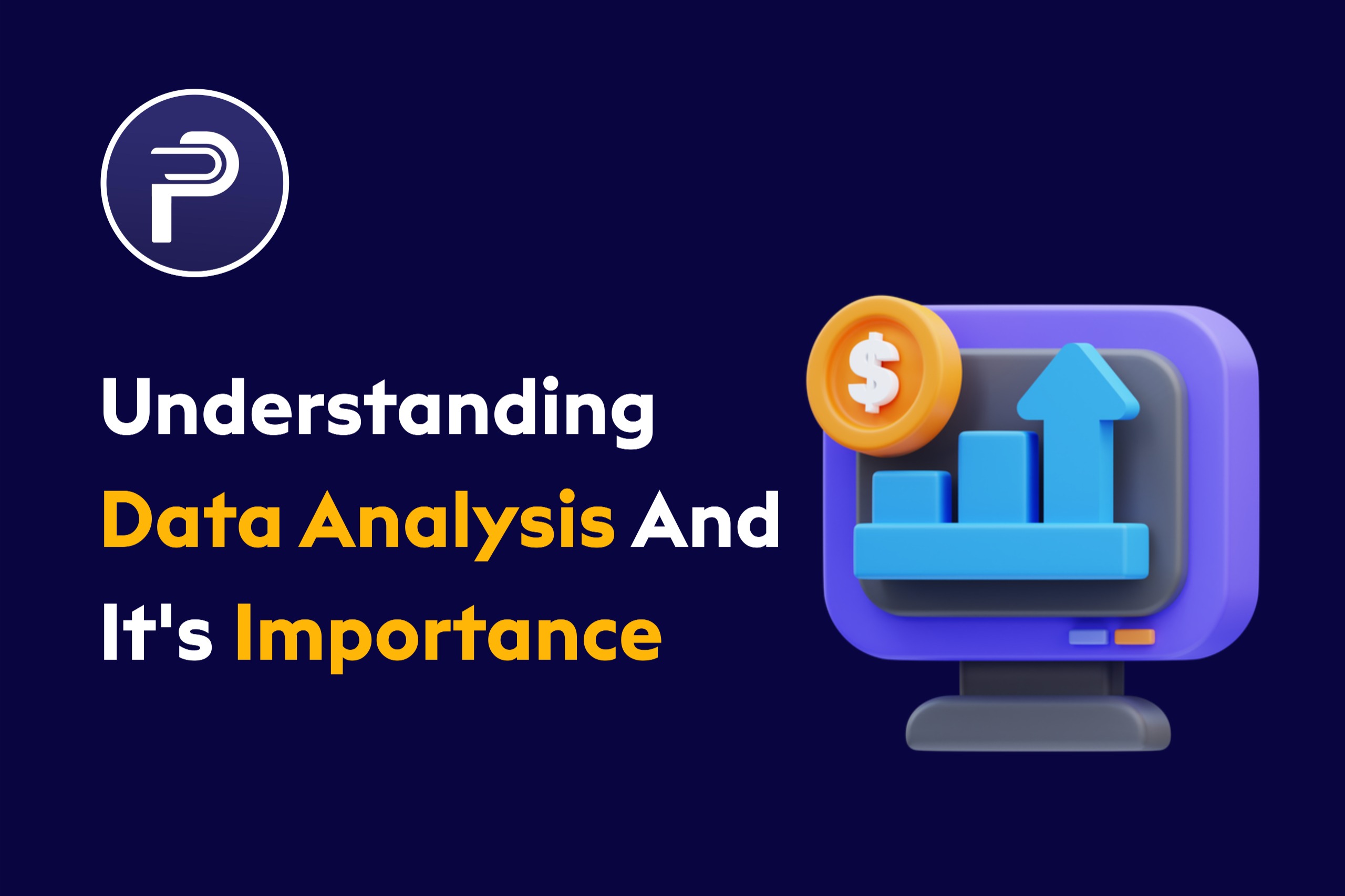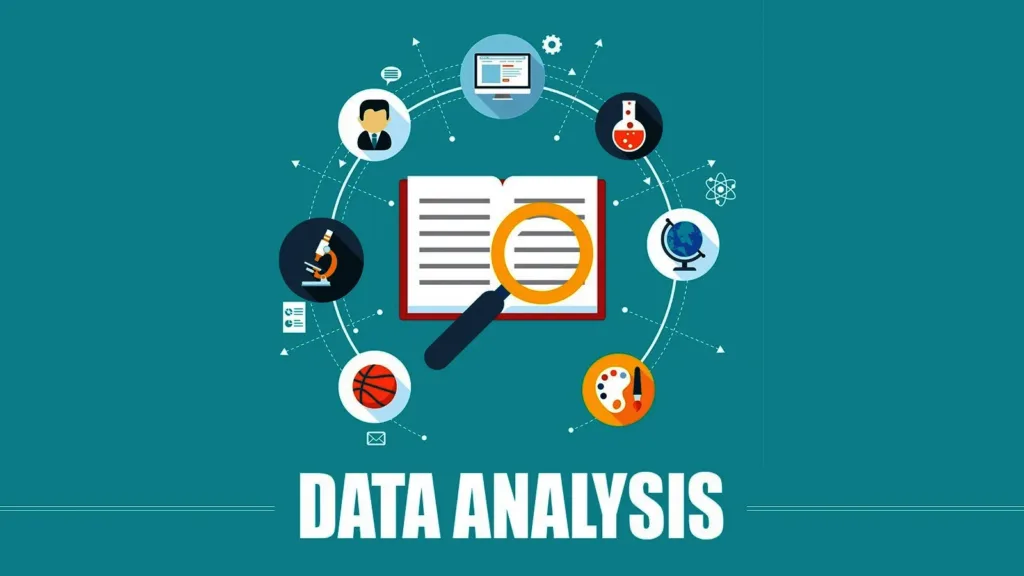
Introduction
In today’s business landscape, gaining a competitive advantage is crucial, considering the challenges posed by rapidly changing markets, economic uncertainty, fluctuating political climates, unpredictable consumer sentiments, and even global health crises. These obstacles have minimized the margin for error in business operations. For companies aiming not only to survive but also to thrive in this demanding environment, the solution lies in embracing the concept of data analysis. This entails strategically gathering valuable, actionable information, which is then utilized to improve decision-making processes.
Must Read:Embarking On A Career As A Backend Developer
What Is Data Analysis?

Data analysis involves examining, cleaning, transforming, and modeling data to extract insights and aid decision-making. As a data analyst, your responsibility includes dissecting extensive datasets, uncovering hidden patterns, and converting numbers into actionable insights.
Importance
In today’s data-driven world, it allows organizations to leverage the potential of data, enabling them to make decisions, streamline processes, and secure a competitive advantage. By transforming raw data into valuable insights, data analysis empowers businesses to pinpoint opportunities, manage risks, and improve their overall performance.
1. Informed Decision-Making
Data analysis serves as the guiding compass for decision-makers navigating through a vast sea of information. It allows organizations to make choices based on solid evidence rather than intuition or speculation. In the business realm, this translates to making decisions that are more likely to result in success, whether it’s selecting the most effective marketing strategy, optimizing supply chains, or introducing new products. Through data analysis, decision-makers can evaluate the potential risks and rewards of various options, leading to improved decision-making.
2. Improved Understanding
Data analysis offers a more profound comprehension of processes, behaviors, and trends. It enables organizations to acquire insights into customer preferences, market dynamics, and operational efficiency.
3. Competitive Advantage
By analyzing market trends, consumer behavior, and competitor performance, organizations can pinpoint opportunities and threats. They can adjust their strategies accordingly to respond effectively, staying ahead of the competition. This capacity to adapt and innovate based on data insights can result in a substantial competitive edge.
4. Risk Mitigation
Data analysis serves as a valuable tool for assessing and managing risks. Organizations can evaluate potential issues and implement preventive measures by analyzing historical data. For example, in the finance industry, data analysis detects fraudulent activities by identifying unusual transaction patterns. This not only reduces financial losses but also protects the reputation and trust of customers.
5. Efficient Resource Allocation
Data analysis assists organizations in optimizing resource allocation. Whether it’s allocating budgets, human resources, or manufacturing capacities, insights derived from data can ensure that resources are used efficiently. For instance, in hospitals, data analysis can help allocate staff and resources to the areas with the highest patient demand, ensuring that patient care remains efficient and effective.
6. Continuous Improvement
Data analysis acts as a catalyst for continuous improvement. It enables organizations to monitor performance metrics, track progress, and pinpoint areas for enhancement. This iterative process of analyzing data, implementing changes, and re-analyzing leads to ongoing refinement and excellence in processes and products.
The Process
The data analysis process is a structured sequence of steps that lead from raw data to actionable insights. Here are the answers to what is data analysis:
- Data Collection: Gather relevant data from various sources, ensuring data quality and integrity.
- Data Cleaning: Identify and rectify errors, missing values, and inconsistencies in the dataset. Clean data is crucial for accurate analysis.
- Exploratory Data Analysis (EDA): Conduct preliminary analysis to understand the data’s characteristics, distributions, and relationships. Visualization techniques are often used here.
- Data Transformation: Prepare the data for analysis by encoding categorical variables, scaling features, and handling outliers, if necessary.
- Model Building: Depending on the objectives, apply appropriate data analysis methods, such as regression, clustering, or deep learning.
- Model Evaluation: Depending on the problem type, assess the models’ performance using metrics like Mean Absolute Error, Root Mean Squared Error, or others.
- Interpretation and Visualization: Translate the model’s results into actionable insights. Visualizations, tables, and summary statistics help in conveying findings effectively.
- Deployment: Implement the insights into real-world solutions or strategies, ensuring that the data-driven recommendations are implemented.
The Methods

1. Regression Analysis
Regression analysis is a powerful method for understanding the relationship between a dependent and one or more independent variables. It is applied in economics, finance, and social sciences. By fitting a regression model, you can make predictions, analyze cause-and-effect relationships, and uncover trends within your data.
2. Statistical Analysis
Statistical analysis encompasses a broad range of techniques for summarizing and interpreting data. It involves descriptive statistics (mean, median, standard deviation), inferential statistics (hypothesis testing, confidence intervals), and multivariate analysis. Statistical methods help make inferences about populations from sample data, draw conclusions, and assess the significance of results.
3. Cohort Analysis
Cohort analysis focuses on understanding the behavior of specific groups or cohorts over time. It can reveal patterns, retention rates, and customer lifetime value, helping businesses tailor their strategies.
4. Content Analysis
It is a qualitative data analysis method used to study the content of textual, visual, or multimedia data. Social sciences, journalism, and marketing often employ it to analyze themes, sentiments, or patterns within documents or media. Content analysis can help researchers gain insights from large volumes of unstructured data.
5. Factor Analysis
Factor analysis is a technique for uncovering underlying latent factors that explain the variance in observed variables. It is commonly used in psychology and the social sciences to reduce the dimensionality of data and identify underlying constructs. Factor analysis can simplify complex datasets, making them easier to interpret and analyze.
6. Monte Carlo Method
This method is a simulation technique that uses random sampling to solve complex problems and make probabilistic predictions. Monte Carlo simulations allow analysts to model uncertainty and risk, making it a valuable tool for decision-making.
7. Text Analysis
Also known as text mining, this method involves extracting insights from textual data. It analyzes large volumes of text, such as social media posts, customer reviews, or documents. Text analysis can uncover sentiment, topics, and trends, enabling organizations to understand public opinion, customer feedback, and emerging issues.
8. Time Series Analysis
Time series analysis deals with data collected at regular intervals over time. It is essential for forecasting, trend analysis, and understanding temporal patterns. Time series methods include moving averages, exponential smoothing, and autoregressive integrated moving average (ARIMA) models. They are widely used in finance for stock price prediction, meteorology for weather forecasting, and economics for economic modeling.
Conclusion
In conclusion, data analysis stands as a cornerstone in today’s data-driven world, offering organizations invaluable insights into various aspects of their operations. By harnessing the power of data, businesses can make informed decisions, optimize processes, identify opportunities, mitigate risks, and drive continuous improvement. The importance of data analysis cannot be overstated, as it empowers organizations to thrive in a rapidly evolving and competitive landscape. With its ability to transform raw data into actionable insights, data analysis paves the way for innovation, efficiency, and sustainable growth.
